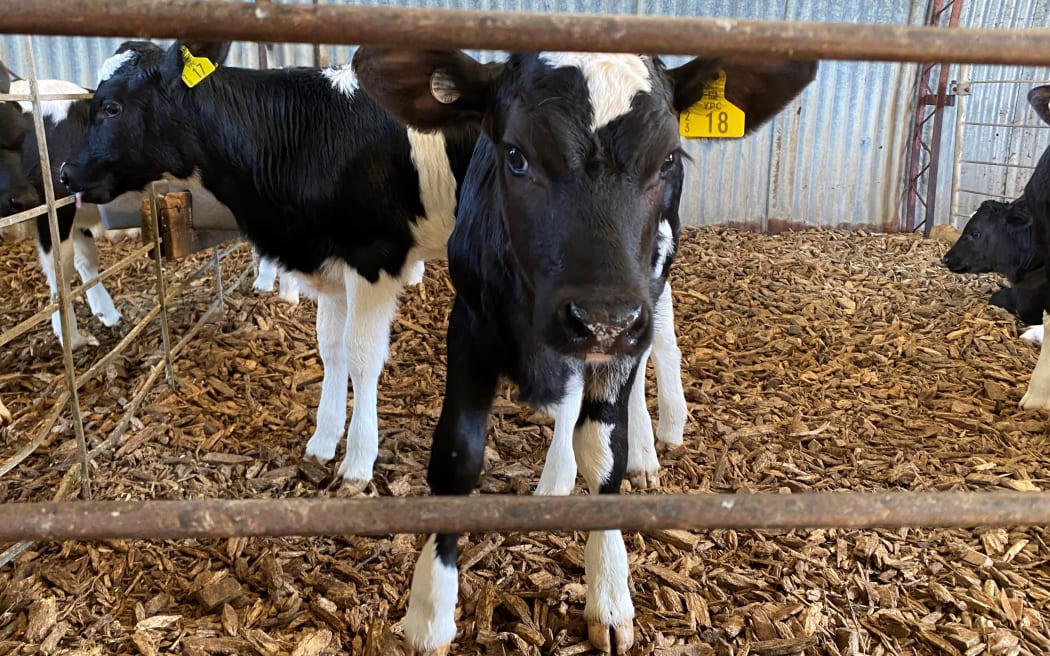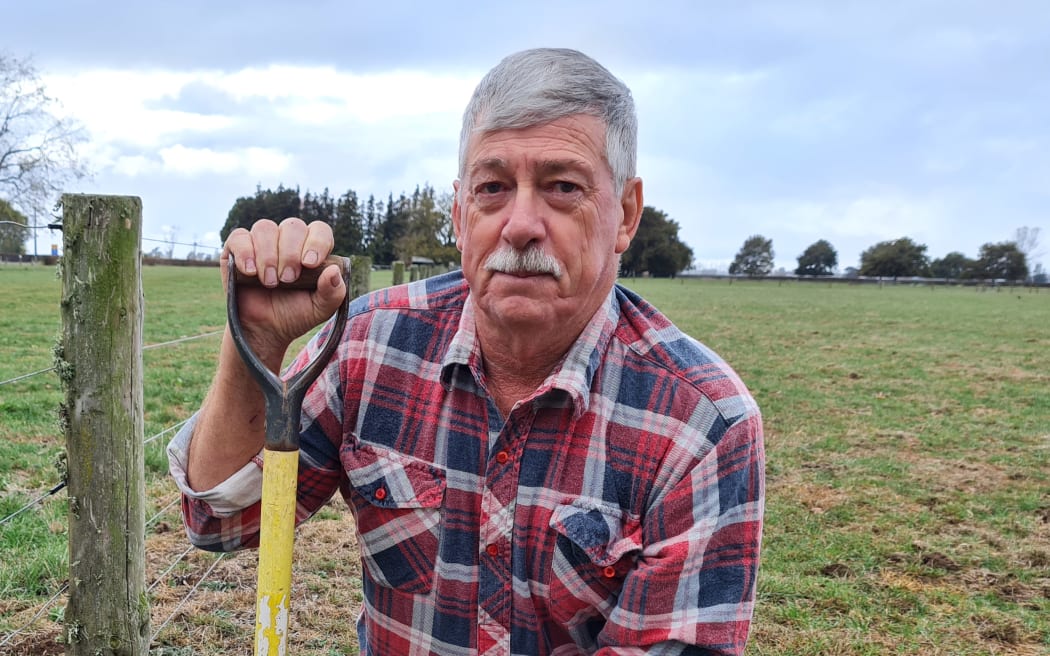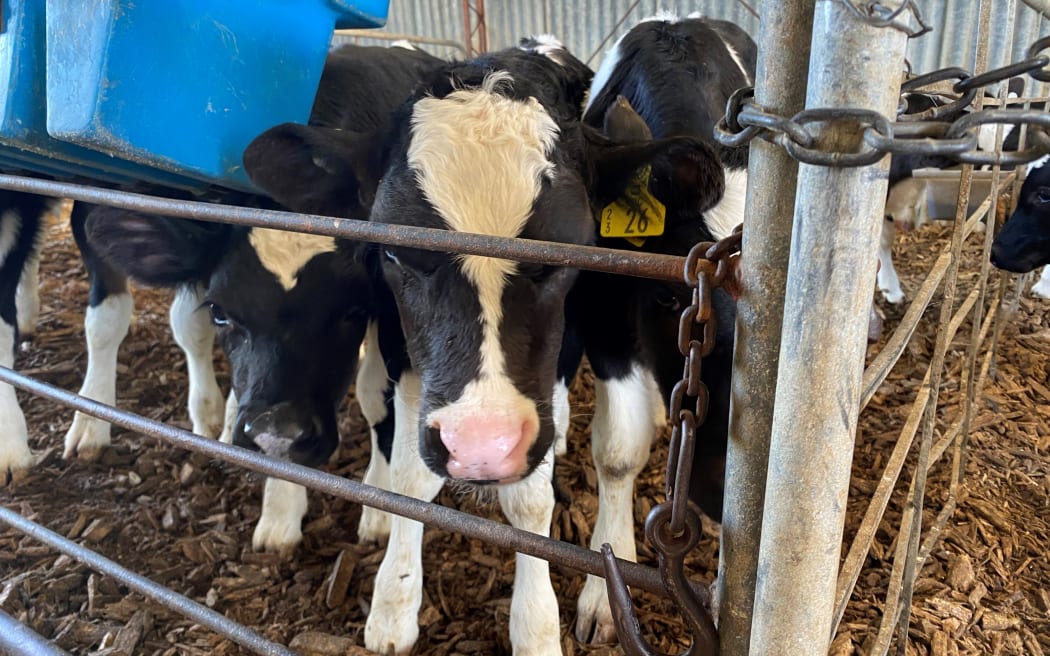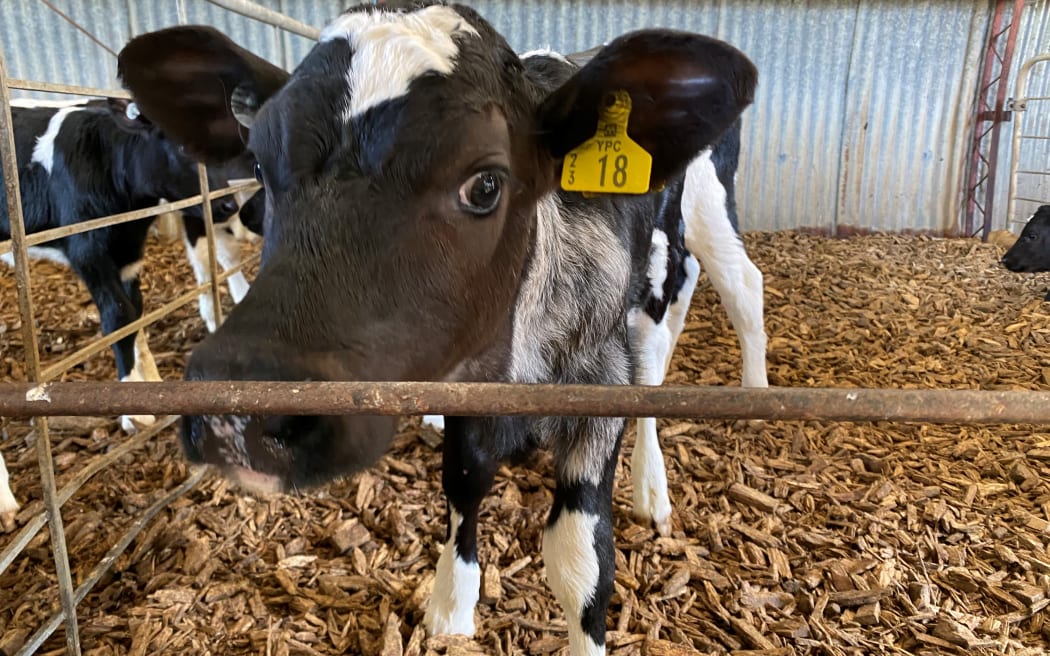
Calves are populating many sheds and paddocks across the country. Photo: RNZ/Leah Tebbutt
With daffodils showing face and more calves in the paddock a sense of spring lingers in the air.
For Morrinsville farmer Peter Le Heron, the sense of seasons changing means only one thing - calving.
When Country Life visits on his 56-effective-hectare farm this week, he's about halfway through his calving season.
"We started calving for our heifers on 9 July and the main herd started on 18 July. We are now into week five.
"Believe it or not, cow number 150 calved as the 150th cow to calve," he said with a chuckle.

Photo:
Le Heron said 208 cows were in calf this year after poor conception rates earlier in the season. Usually, he would see 215 cows in calf.
Disappointingly he said, it had resulted in having only 32 heifer calves compared to anywhere between 52 and 62 calves.
A heifer is a female that has not had any offspring, however after giving birth to their first calf a heifer becomes a cow.
Calving is an essential part of the dairy farming calendar. In order to have milk, cows must be in calf.

A bunch of nosey calves ready for their afternoon milk. Photo: RNZ/Leah Tebbutt
"Calving is one of the most traumatic times of the year," Le Heron said.
"For town people, it's a really busy time. Kyle (the farm manager) is getting to the cow shed at 5.30am and he is probably going home for breakfast at about 11am and is back an hour later for the rest of the afternoon.
"You are bringing in cows in calf, you're feeding the calves, milking the colostrum cows, keeping it separate on the first take so you can feed it to the calves in the barn. And then you turn around and milk your cows at night."
Le Heron said once a cow had done eight milkings into the colostrum vat they would go into the milking herd.
"It's just constant, constant, constant. It's full on."
In about a month, the cycle begins again with mating.
"You try to calve within the eight-week period if you can. Nine or 10 weeks at the max. Anything after that you will struggle to get your cows in calf," Le Heron said.

Calving season is halfway through for some farmers. Photo: RNZ/Leah Tebbutt
Last week, dairy prices crashed to their lowest levels in nearly five years at the Global Dairy Trade auction, led by a 10.9 per cent fall in the price of whole milk powder.
Le Heron is a Tatua farmer. He said the farm had been guaranteed a price of $9 per kilogram of milk solids (kgMS) at the beginning of the season.
He believes the new price point for Fonterra farmers of $6.25 per kgMS would be below break even for most.
"Even on a Tatua farm, we still need money to survive. If we had a $9 payout versus what we got last season, it would be pretty touch and go, break even-wise."


